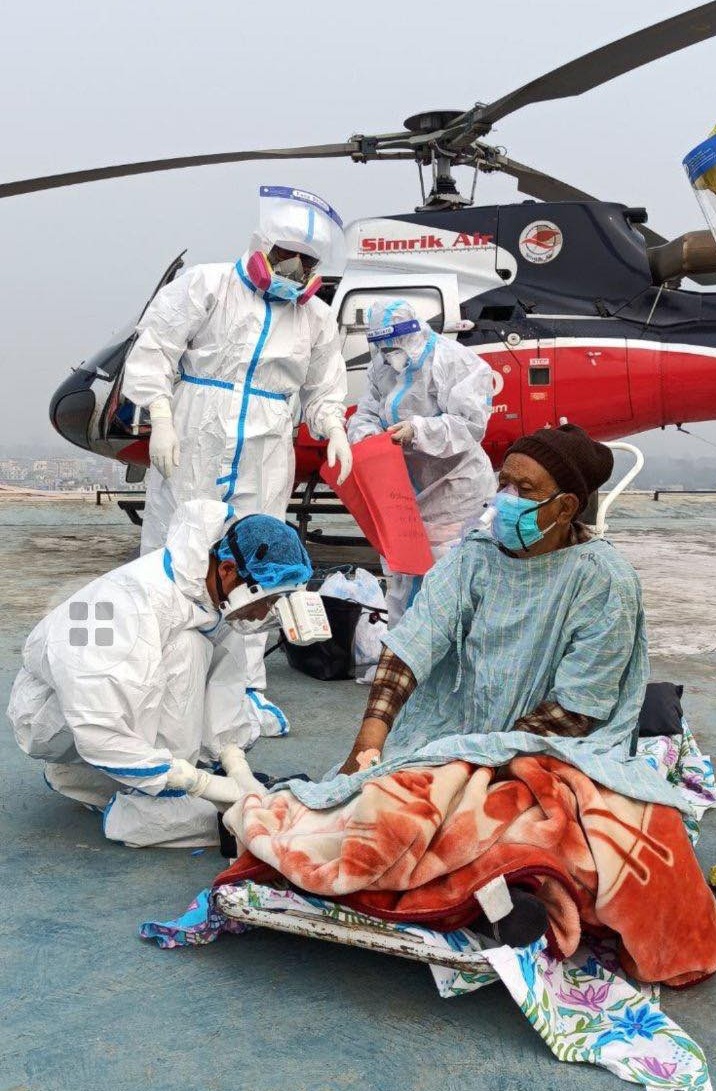
Perspectives
5 MIN READ

As we remember the 2015 earthquakes, and fight against resurging Covid-19 cases, we mourn the lives that could have been saved if basic emergency care was available.

Dr Kamal Thapa had just reached home on the afternoon of April 25, 2015, when an 8.1 magnitude earthquake shook Nepal, killing nearly 9,000 people and impacting almost every single Nepali. Even as his building was shaking, Dr Thapa ran inside, looking for his stethoscope, torchlight, and trauma scissors. Once he had his equipment, he immediately headed back to the hospital.
Amid the chaos and panic that followed, Thapa only had one thought in mind: to get back to work as soon as possible.
“After confirming my mother, brother, and sister were all safe, my attention immediately shifted towards my hospital and my patients,” said Dr Thapa, an emergency medicine specialist, who was working at Tribhuvan University Teaching Hospital’s emergency department, one of the busiest emergency rooms in Nepal.
Emergency care providers like Dr Thapa were at the forefront of the 2015 earthquakes’ response, risking their lives daily and working back-to-back shifts. And now, in the midst of the Covid-19 pandemic, they’re once again at the frontlines.
“In a mass casualty event or a national disaster, emergency departments take the responsibility to create a triage system, and evaluate and stabilize patients. As emergency care providers, we have to be ready to respond at any time,” said Dr Olita Shilpakar, an emergency medicine specialist working in Kathmandu.
In the spring of 2020, when the first few Covid-19 cases were seen in Nepal, the entire country was engulfed by fear — doctors and hospitals were afraid to treat Covid-19 patients, ambulances were afraid to transport patients suspected of Covid-19, the government was afraid of not having enough resources, and citizens were overwhelmed with uncertainty. Despite these overbearing fears, emergency care providers did not shrink their duties.
“I vividly remember getting a call from a distressed Covid-19 patient’s family from Butwal, and without hesitation, I arranged a flight to transport the patient to our higher-care facility,” said Dr Thapa.
When much was not known about the risks Covid-19 posed to providers, emergency healthcare professional Dr Thapa had to take the risk to establish ventilator support and transport patients to facilities with higher-level care. Thapa was also the first emergency physician to conduct the helicopter rescue of a Covid-19 patient in Nepal.

But professionals like Dr Thapa are few in number. Since the beginning of the pandemic, Thapa has individually taken care of more than 200 Covid-19 patients, and that number is growing daily with the new wave of cases. Nepal has officially reported almost 300,000 COVID-19 cases so far with more than 3,000 deaths, and the primary cause of death has been breathing complications. One of the key aspects of an emergency provider’s training is to ensure that their patient is breathing comfortably. In many cases, this requires putting patients on a ventilator. The procedure to put a Covid-19 patient on a ventilator poses a high risk of transmitting the coronavirus to healthcare professionals. While performing this procedure, providers need to put their mouths close to the patients’ even as aerosols carrying the virus are generated. This increases the healthcare provider’s risk of catching the virus.
“I have performed many endotracheal intubations to save my patient’s lives multiple times. The biggest challenge working in the emergency department is that most patients come to us undifferentiated, and we have to make quick decisions to save lives. Sometimes, this means we might not be well protected,” said Dr Shilpakar. “Many times, we did not have the appropriate masks, gowns, and other basic protective equipment, but this did not stop us from going to work and seeing patients.”
Like Dr Thapa and Dr Shilpakar, I am also an emergency medicine specialist and have worked on the frontlines of the Covid-19 pandemic. I did my training in the United States, a country where emergency medicine was established as a field in the 1960s. In the US, it is impossible to imagine a healthcare system without a pre-hospital system, an emergency department, or emergency medicine specialists.
Unfortunately, the case is not the same in Nepal. And during the pandemic, the importance of trained emergency medical professionals became even starker.
Most emergency care at the local level in Nepal is provided by health assistants and medical officers — MBBS graduates who have just finished medical school, internal medicine, and general practitioners. There are very few specially trained emergency care consultants in Nepal and the current postgraduate medical system in Nepal does not have a direct path to become a physician with a specialization in emergency medicine. Physicians like Dr Thapa and Dr Silpakar have spent an additional three years getting their Doctorate of Medicine in Emergency Medicine, which demands a lot of time.
In a developing nation like Nepal, where a majority of the population lives below the poverty line and chances of an epidemic are never too far, the government has to prioritize offering post-graduate training (residency) in emergency medicine, just like any other specialty. In fact, most developed nations have specialty training in emergency medicine.
“We recognize the importance of appropriate emergency medical training for physicians. We will likely support well-designed postgraduate training for Doctor of Medicine (MD) in Emergency Medicine if medical universities in Nepal want to offer such training,” said Dr Bhagawan Koirala, president of the Nepal Medical Council, the professional body of physicians that is in charge of monitoring and regulating medical education and training, as well as conducting licensing exams.
Nepal’s Ministry of Health and Population has also recognized emergency medicine as a specialty on its own and has increased its focus on advancing emergency care in the country.
“Increasing the workforce by establishing focused training is a key step towards improving emergency care in our country,” said Dr Samir Kumar Adhikari, chief of the health emergency operation center (HEOC) at the Health Ministry.
Plans have been made, but now, it’s time to materialize them into action.
Nepal’s constitution guarantees free emergency care to all citizens. The Covid-19 pandemic and the devastating earthquake of 2015 have taught us how ill-equipped the nation is in offering its people emergency care. The two disasters have shown us how important it is to have a sturdy, well-equipped emergency workforce.
Today, as we remember the 2015 earthquake, and continue our fight against the Covid-19 pandemic, we mourn the lives lost over the last six years from conditions that could have been easily saved if basic emergency care was available. But we also celebrate the numerous lives that have been saved by health workers who have stood fearlessly on the frontlines of these disasters.

Ramu Kharel Dr Ramu Kharel is a Nepal-born emergency medicine physician at Brown University, USA. He completed his public health education at Harvard and works to strengthen emergency care.


Features
11 min read
Covid-19 managed to break all geographical boundaries to reach the remote village of Lalu – and the couple who operate its only private school.
COVID19
News
4 min read
By not focusing on contact tracing and other measures, the government is missing the whole point of clamping lockdowns
COVID19
Features
10 min read
To get on the path to sustained economic recovery, Nepal will need to develop trade mechanisms that have been re-calibrated to meet the needs of the changed global context
COVID19
3 min read
Many Nepalis are despairing at the Nepal-India border after being denied entry to their own country
COVID19
News
3 min read
A daily summary of Covid19 related developments that matter
COVID19
News
3 min read
A daily summary of Covid19 related developments that matter
COVID19
News
2 min read
In the midst rise in Covid cases, the health ministry makes some positive announcements